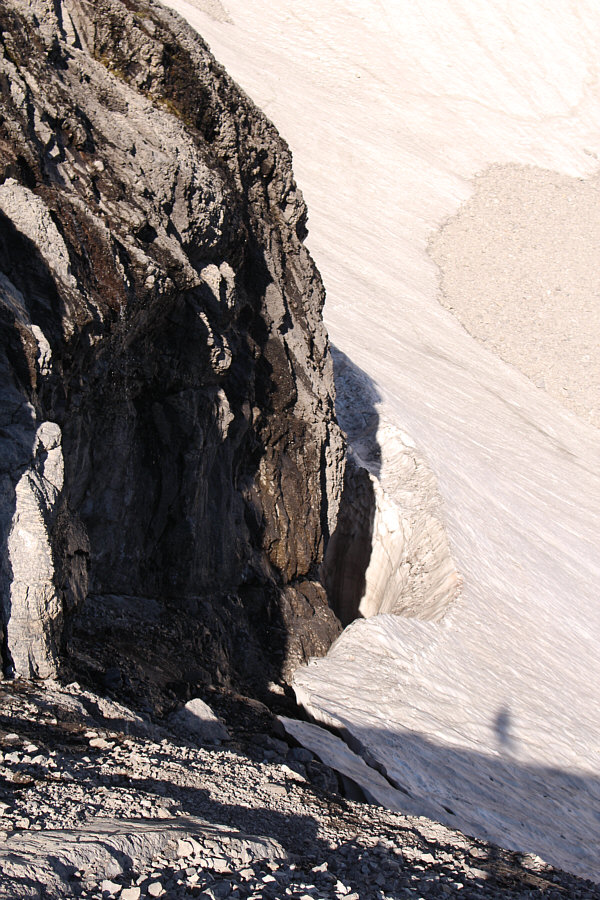



 |
The Cummings Creek road is mostly an easy double-track to the Telford Creek junction. |
 |
Sonny picks up a rather small boreal toad somewhere along Telford Creek. |
 |
A rusted bed spring in the middle of the woods invites much speculation about how it may have gotten here. |
 |
Sonny would turn around shortly after reaching this avalanche slope. |
Once I regained the road, I settled into
a long but uneventful march back to my bicycle. Despite still
wearing my sunglasses, I had enough illumination from my headlamp and my
bicycle's LED light to ride back to my car without a spill. On the
ensuing drive back to Calgary, I began to fade a bit on the outskirts of
the city, but I managed to make it home safely. Unfortunately,
after putting away my bicycle, feeding my hungry cats, and cleaning my
hiking gear, I would only get about an hour's worth of sleep before I was
up again to meet a friend for another adventure in the mountains the next
day. Such is my love affair with mountains--here today, gone
tomorrow!
 |
The first bridge over Cummings Creek is the end of the line for most cars. |
 |
The second bridge over Cummings Creek is in need of repairs (gap at far end). |
 |
The Telford Creek road branches off to the left at this junction. |
 |
A glade near the end of the Telford Creek road grants a view of the summit of Mount Washburn. |
 |
The upper tarn at the head of Telford Creek valley is a good place to take a break before tackling the remaining 1000+ metres of elevation gain to reach the summit (visible through the gap at upper right). |
 |
This perspective shows how the upper tarn has split in two. |
 |
From a distance, the amphitheatre appears to be impregnable. |
 |
A goat track leads to the weakness in the cliffs of the amphitheatre. |
 |
Above the cliffs of the amphitheatre is the cirque (far right) with the permanent snowfield. |
 |
The upper left corner of the snowfield is key to climbing out of this cirque. |
 |
This is looking back down at the crux above the snowfield. Note Sonny's tracks and the chasm between the snowfield and the cliffs. |
 |
Above the cirque, a traverse across steep scree and snow patches leads to the south ridge. |
 |
An impressive buttress guards the south side of Mount Washburn's summit block. |
 |
Some parties that climb Mount Washburn approach from the Bull River Road to the west and likely come up the slopes at bottom right. |
 |
The west side of the summit block has some complicated terrain. The block at right is an outlier, and the shadowy cleft is not the route to the summit. |
 |
The access gully is the crack on the right. |
 |
The summit cairn is finally in sight. |
 |
Sonny holds up the summit register on top of Mount Washburn (3024 metres). The current register was placed by Rick Collier and Bill Hurst exactly 17 years ago to the day. |
 |
To the north, Mount Frayn is the dark peak at left while Mount Gydosic is the peak in the foreground. On the horizon at far left is Mount Harrison. |
 |
The eastern outlier of Mount Washburn obscures most of the Telford Creek (approach) valley. |
 |
Some of the peaks in the Fernie area are visible to the south including Mount Hosmer (centre), Three Sisters (right), and Mount Bisaro (far right). |
 |
Total
Distance: 37.2 kilometres Total Time: 14 hours 49 minutes Net Elevation Gain: 1807 metres |